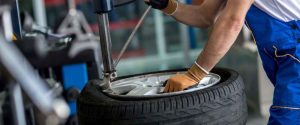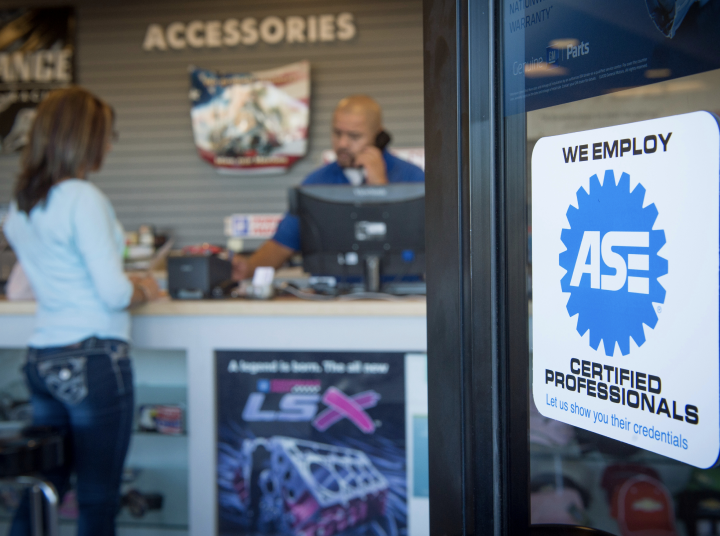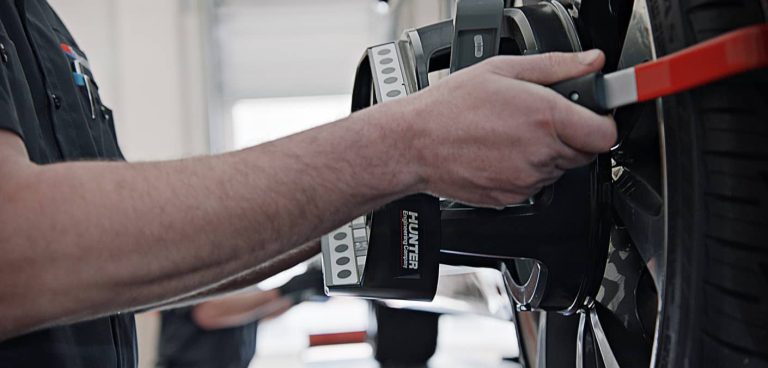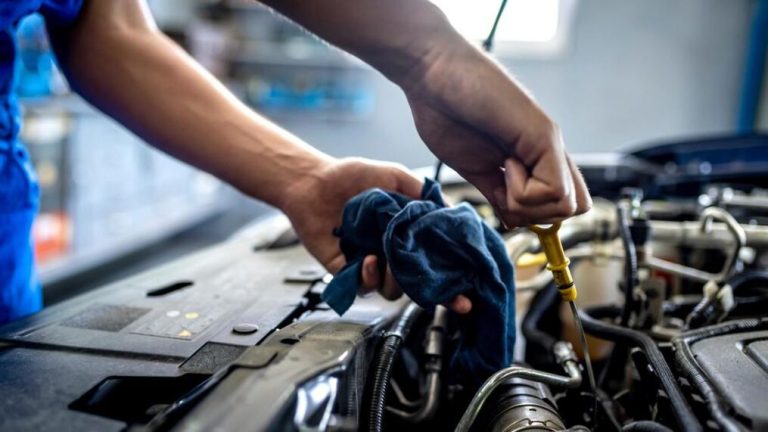2101 Whitney Ave. Gretna, LA 70056 | Phone: (504) 362-6947 | Hours: 8am - 5pm Mon. - Thur. / 7am - 4pm Fri.
Tire Replacement Guide

Source: Bridgestone Tire
Check For Tread Depth
The best way to know if it’s time to buy new tires for your vehicle is to have them inspected by a professional, but there are ways to check them yourself. To meet legal safety standards in the U.S., a tire’s tread needs to be at least 2/32” deep. If the tires do not meet the 2/32” standard or are approaching not meeting it, you should replace your tires. Tires should also be free of sidewall damage and irregular wear for optimal performance and safety. It’s also a good idea to learn what types of damage can be repaired vs. replaced so that you can safely extend the life of your tires.
You can evaluate your tires on your own through a visual inspection. Start with the tread — the part of the tire that contacts the road surface. Make sure the tire tread is deep enough and worn evenly all the way around without any irregularities. All DOT-regulated tires feature built-in treadwear indicators, commonly called “wear bars”, that will help you see when the tread is getting low. These indicators can be found in various places throughout the tread and will be even with the tread surface when the tread is worn to two-thirty seconds (2/32) of an inch. You should also examine each tire’s sidewall to ensure there is no visible damage.
The Penny Test
You can also use the Penny Test to check your tire tread. This test can be performed in your own driveway in just a few minutes.
The idea of the penny test is to check whether you’ve hit the 2/32” threshold. Here’s how it works:
- Place a penny in the tread of your tire.
- Turn the penny so that Lincoln’s head points down into the tread.
- See if the top of Lincoln’s head “disappears.” If it does, your tread is still above 2/32” and you’re good to go. If you can see his entire head, it may be time to replace the tire because your tread is no longer deep enough.
Check all four tires, especially in areas that look the most worn. If any parts of your tire fail the penny test, it may be time to replace the tire.
Consistent wear around the whole tire is normal. Uneven tread wear could be a sign of improper inflation, wheel misalignment, or a variety of other things. If you see uneven tread wear, you should have a technician inspect your vehicle.
If your tires pass these tests, you may not need to buy new tires just yet. It’s a good idea to reassess the tread every few thousand miles, or once a month, and even more often if you’re putting a lot of wear on your vehicle or driving long distances.
When Should Your Tires Retire?
No matter how new your tire is, Bridgestone recommends checking inflation pressure every month and scheduling regular inspections with a pro. After five years, an inspection is essential to determine if a tire is still road-worthy.
We recommend tires that were manufactured 10 years prior (or longer) be taken out of service and replaced with new tires. Same goes for the spare. If it’s 10 years old, it needs to be replaced, even if it appears new.
It’s important to note that the age of a tire is not the only indicator of whether it needs to be replaced. Many tires will need to be replaced before 10 years of age due to routine tread wear and other conditions such as punctures, impact damage, improper inflation, overloading and more. If a tire is worn out or otherwise unserviceable from damage or conditions of use, it should be replaced regardless of when it was produced or purchased.
Do I Have To Replace All Four Tires At Once?
Another common tire-buying question is if it’s necessary to replace all four tires at once. The simple answer is yes. It is recommended to replace all four at once because your tires are key to the performance and handling of your vehicle, it’s important for them to be as identical as possible. If your tires don’t match, one end of your vehicle may not be able to respond as quickly as the other, making it difficult to control. Your tires are what keep your vehicle connected to the road, so having an even surface is vital.
If you are in a situation where you will be replacing fewer than four tires, select tires that are similar to what is currently installed on your vehicle. If you are replacing just two tires, those two tires should only be installed on the rear axle. You should only consider tires that are within the same category as your existing ones.
If you have a vehicle that came equipped with a staggered fitment (different size tires on the front and back) then you should check your vehicle owner’s manual for replacement recommendations.
Which Tires Are Better, New or Used?
There are a lot of risks associated with buying used tires. Since you don’t know the history of the tires, it can be difficult to know if they’ve been previously run under inflated, over loaded or have other unseen internal damage which could lead to an unexpected failure. Used tires might also have uneven wear, which can cause noise, vibration or other problems and may need to be replaced much sooner than new tires. It is best to replace tires with new tires of the same category, size, load capacity and speed rating as recommended by your vehicle’s manufacturer.
Check for Tire Recalls
When it comes to recalled tires, there is only one position to take. We do not want anyone driving on recalled tires. We are committed to replacing, free of charge, any Bridgestone or Firestone tire (or other brands warranted by Bridgestone) subject to a customer satisfaction, quality and/or safety recall, at any time. The easiest way for consumers to get answers to questions about recalled tires is to call 1-844-293-7514 or locate an authorized Bridgestone or Firestone dealer to examine the tires in question. You can also check current tire recalls online at the National Highway Traffic Safety Administration site.



